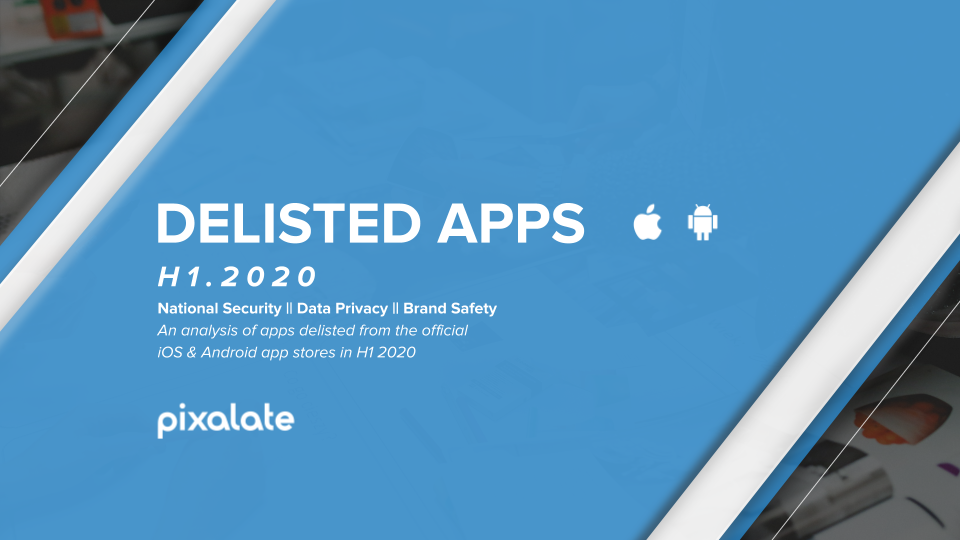
Pixalate's latest research reveals that over 800,000 apps were delisted across the Google Play and Apple App stores in H1 2020.
The report shines a light on the previously undisclosed corner of the mobile app ecosystem: Delisted apps.
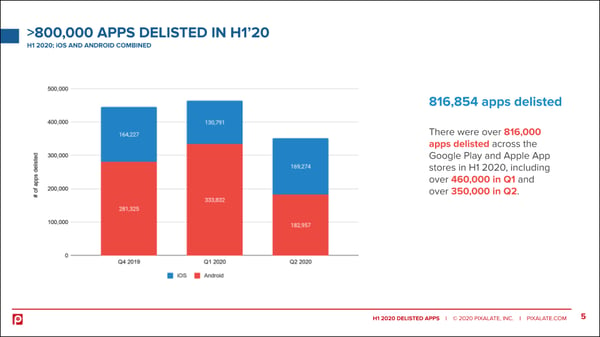
Nearly 3,000 Android apps that were delisted in H1 2020 had over 1 million downloads prior to delisting, according to Pixalate’s research. Over 200 of those apps had more than 10 million downloads:
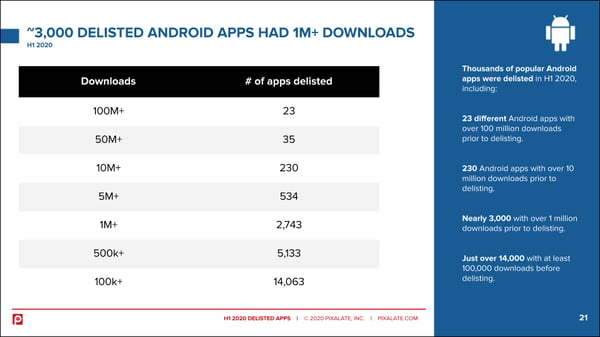
On iOS, over 500 of the delisted apps had over 10,000 user ratings prior to delisting. Nearly 100 of the apps had over 50,000 ratings (user ratings used as a proxy of popularity).
Two-thirds (66%) of delisted Android apps had at least one “dangerous permission,” as defined by Google.
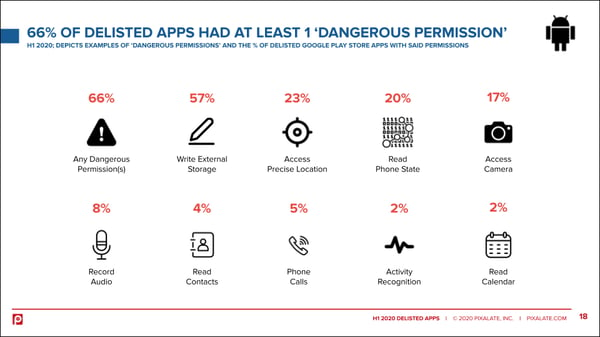
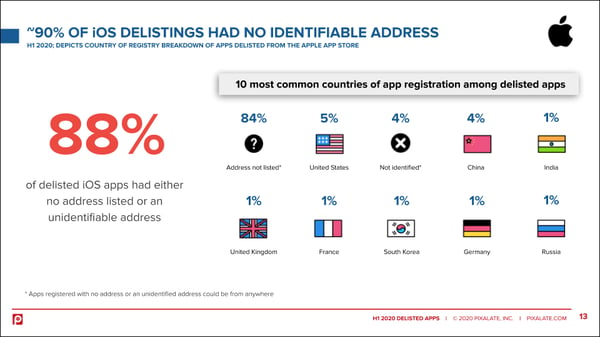
In H1 2020, the vast majority (88%) of delisted iOS apps had either no address listed (84%) or an unidentifiable address (4%). On Android, 74% of delisted apps had either no address (59%) or an unidentifiable address (15%).
Inside our delisted apps report, you’ll find:
Disclaimer
The content of this blog reflects Pixalate's opinions with respect to the factors that Pixalate believes can be useful to the digital media industry. Any data shared is grounded in Pixalate's proprietary technology and analytics, which Pixalate is continuously evaluating and updating. Any references to outside sources should not be construed as endorsements. Pixalate's opinions are just that, opinions, which means that they are neither facts nor guarantees.
In the context of this blog, "delisted apps" include apps delisted on or after the first date of a quarter (January 1, 2020 for Q1 2020, April 1, 2020 for Q2 2020), and not on the Google Play Store or Apple App Store as of the last day of the quarter (March 31, 2020 and June 30, 2020, respectively). The delisting of an app does not indicate the entity or person that initiated the delisting action, i.e. Google, Apple, or the app developer, as that information is not generally available publicly. Additionally, the mere fact that an app has been delisted does not necessarily imply that one should draw negative inferences regarding the app or its developer. It is important to note that there are many relatively benign reasons for the delisting of apps (e.g., rebranding, app replacement, change in business direction, or a business transaction involving the app and/or the app’s developer).
*By entering your email address and clicking Subscribe, you are agreeing to our Terms of Use and Privacy Policy.
These Stories on Mobile
*By entering your email address and clicking Subscribe, you are agreeing to our Terms of Use and Privacy Policy.

Disclaimer: The content of this page reflects Pixalate’s opinions with respect to the factors that Pixalate believes can be useful to the digital media industry. Any proprietary data shared is grounded in Pixalate’s proprietary technology and analytics, which Pixalate is continuously evaluating and updating. Any references to outside sources should not be construed as endorsements. Pixalate’s opinions are just that - opinion, not facts or guarantees.
Per the MRC, “'Fraud' is not intended to represent fraud as defined in various laws, statutes and ordinances or as conventionally used in U.S. Court or other legal proceedings, but rather a custom definition strictly for advertising measurement purposes. Also per the MRC, “‘Invalid Traffic’ is defined generally as traffic that does not meet certain ad serving quality or completeness criteria, or otherwise does not represent legitimate ad traffic that should be included in measurement counts. Among the reasons why ad traffic may be deemed invalid is it is a result of non-human traffic (spiders, bots, etc.), or activity designed to produce fraudulent traffic.”

